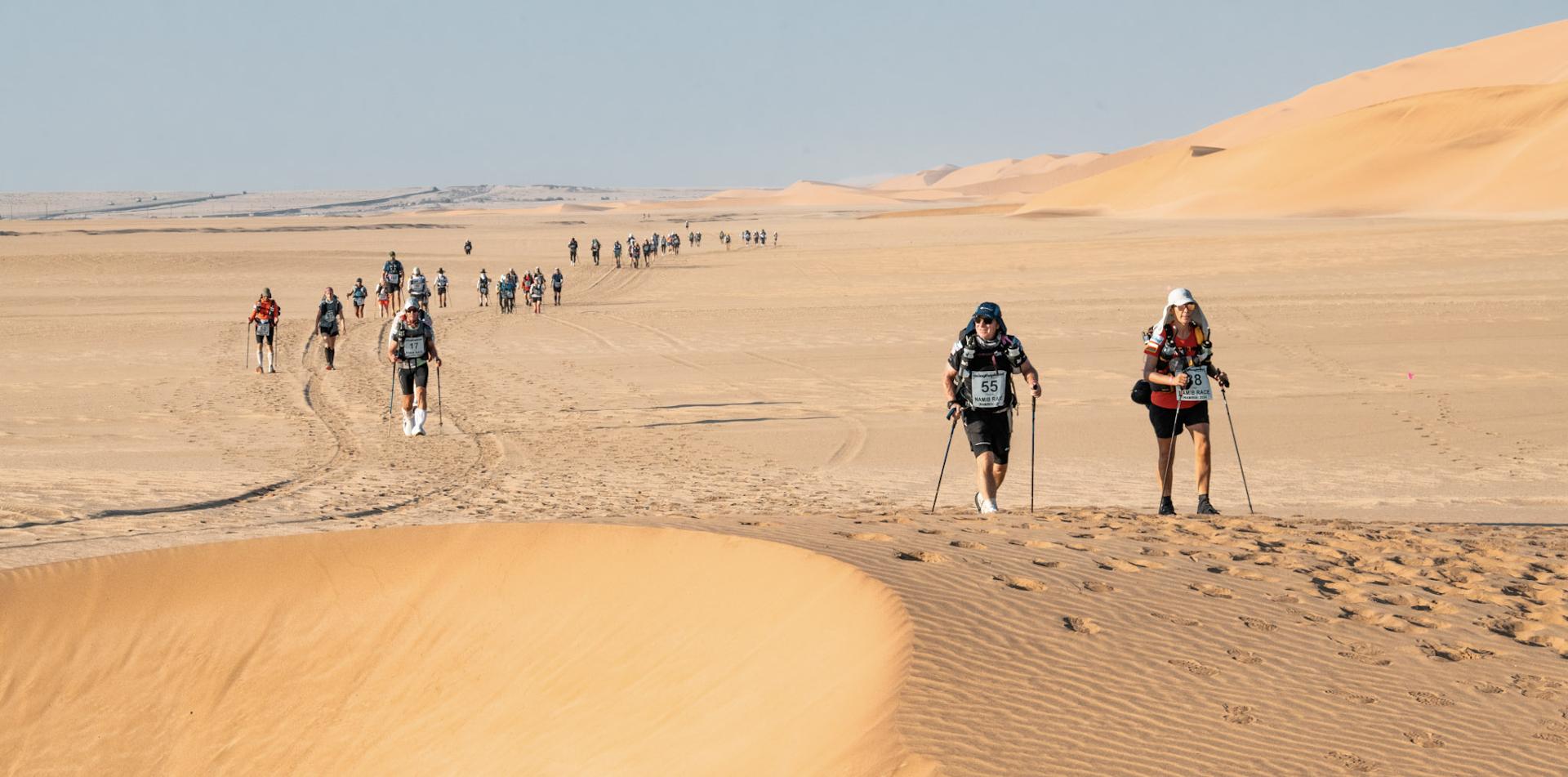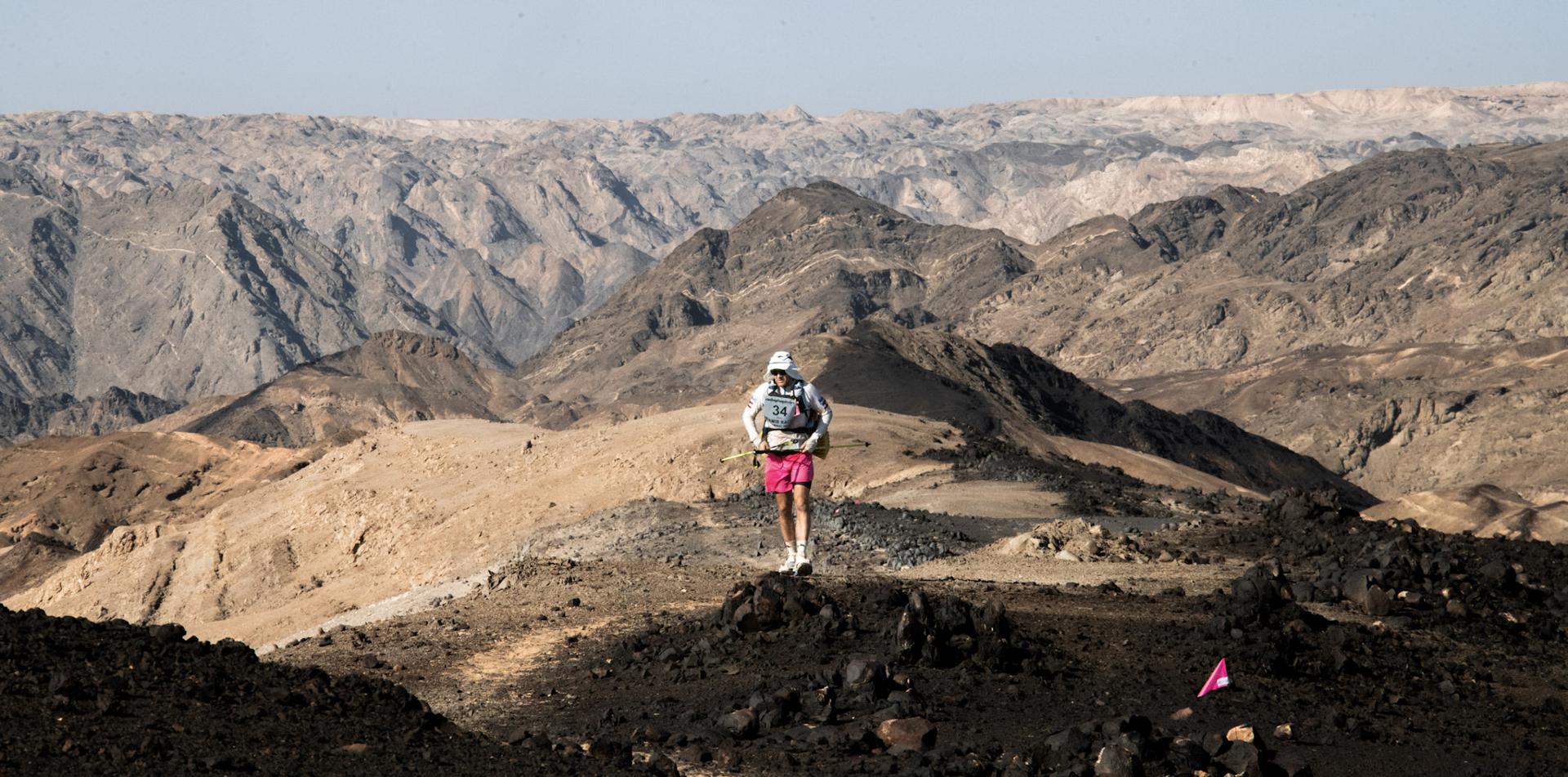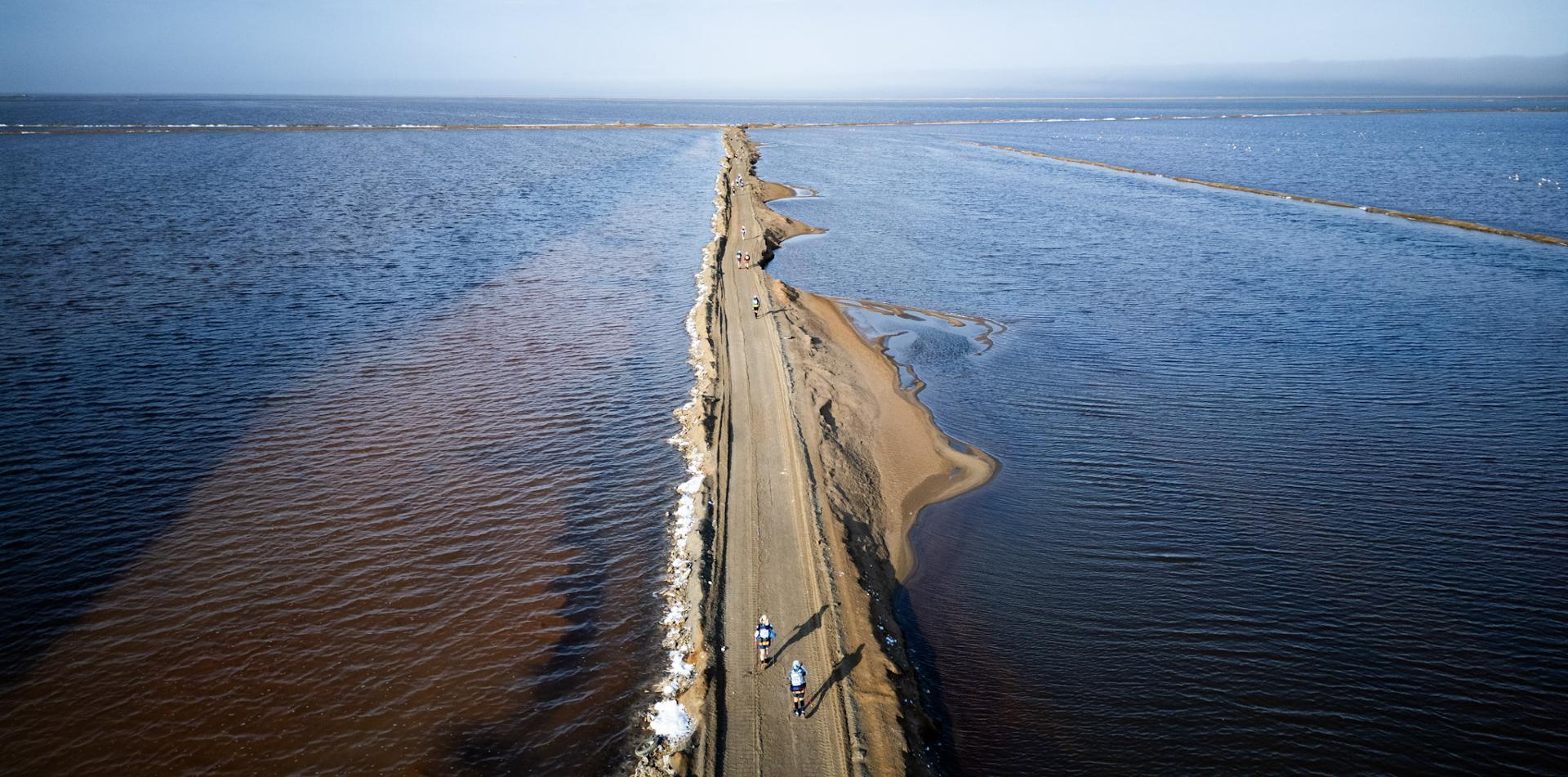Race Coverage

RACE Coverage
QUICK FACTS
There is a fascinating array of plants and animals, many of which are endemic to the area as a result of the age of the desert. terrain including. You may see springbok, oryx, hyena, flamingos, ostrich and zebra.
The next edition of the Namib Race starts on 16 August 2026.
As well as the sandy terrain of the beaches and dunes there are also hard packed tracks, rocky scrambles, single-track trails and dry riverbeds
The full event schedule is 10 days from the 14 to 24 August.
The highest point is at 550 meters / 1,800 feet.
It is a 250km, 6-Stage, 7-day, self-supported ultramarathon.
Total elevation gain will not exceed 2,000 meters / 7,000 feet over the seven days.
UltraLite (Namibia) is held alongside the Namib Race. UltraLite competitors will complete up to 110km / 68 miles.
The meeting place is the coastal desert town of Swakopmund.
August is the dry, winter season in Namibia, which is characterised by clear, sunny days and cool nights. Expect temperatures up to 35C / 95F.
The Namib Race is part of the 4 Deserts Ultramarathon Series, named by TIME magazine as one of the Top 10 Endurance Competitions in the world.
UltraLite (Namibia) can be completed in a supported format – this means that a Camp bag will be transported for you from Camp to Camp.
2026 is the 8th edition of the Namib Race which replaced the Sahara Race (Egypt) in 2016.
A day pack with essential items for nutrition and safety must be carried during each Stage.
The Namib Race takes place in the Namib Desert of Namibia, which is considered the oldest desert of the world with the largest dunes and boasts some of the most iconic desert landscapes.
The average weight of a backpack for an UltraLite competitor is 5kg / 11lbs.
It is possible to walk the entire course and still complete the race. The cut-off times are set at an average walking speed of 4km / 2.5 miles per hour.
Stages 1 to 4 are a marathon distance, with a double marathon on Stage 5.
90% of Namibia is classed as desert. You will experience the full spectrum that a desert has to offer, with diverse scenery and terrain
The number of UltraLite competitors is limited to 25.
Highlights of the Namib Race include sand seas, wide-open plains, scattered mountain outcrops, the moon-like landscape of the Namibian ‘Moon Valley', Atlantic waves crashing against the sandy desert shoreline, small settlements, traversing salt pans, passing salt lakes which are home to flamingos, running over the infamous dunes of the Namib desert and into dry riverbeds where a hint of water gives way to lush green vegetation.
There is a fascinating array of plants and animals, many of which are endemic to the area as a result of the age of the desert. You may see springbok, oryx, hyena, flamingos, ostrich and zebra.
As well as the sandy terrain of the beaches and dunes, there are also hard packed tracks, rocky scrambles, single-track trails and dry riverbeds.
The highest point is at 550 meters / 1,800 feet.
Total elevation gain and loss is approximately 2,000 meters / 7,000 feet.
August is the dry, winter season in Namibia, which is characterised by clear, sunny days and cool nights. Expect temperatures up to 35C / 95F.
The Namib Race is a self-supported race which means that competitors carry everything they need for the week in a backpack, except tents and water.
The equipment list includes 35 mandatory items.
The average weight of a backpack is 10kg / 22lbs.
The leaders race at an average speed of 10km per hour / 6 miles per hour, completing the entire course in under 24 hours.
It is possible to walk the entire course and still complete the race. The cut-off times are set at an average walking speed of 4km / 2.5 miles per hour, completing the 250km course in 70 hours.
On average, 20% of people run the entire course, 20% walk the entire course and 60% combine running with walking.
The race is limited to 150 competitors.
The field is generally 70% male / 30% female. The youngest person is 18 and oldest is in their 70s with more than 40 countries represented.
The deadline for registering is 120 days before the race – 18 April 2026.
The entry fee is US$4,200 until 120 days before. After 18 April 2026, this increases by US$300.
Almost everything is included in the entry fee once you arrive in host town.
Accommodation is provided for nine nights – two nights in a hotel in Swakopmund and seven nights in tented accommodation at six different campsites.
Namibia is one of the least densely populated countries in the world but still retains great culture.







 Newsletter
Newsletter
 Online Store
Online Store
 Login
Login




